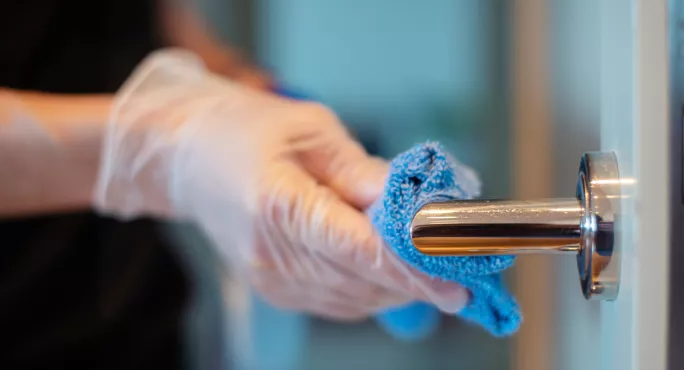The Department for Education has announced the measures that it says will keep schools safe when they reopen to more pupils under plans due to begin next month.
The approach is based on: “The Scientific Advisory Group for Emergencies advising the government it has a high degree of confidence that the severity of the disease in children is lower than in adults and a moderately high degree of confidence that children aged up to 11 are less susceptible to it.”
Coronavirus: Demand for rethink of ‘rushed’ school reopening plans
The plan: All primary pupils to be back in school before summer
Safety fears: School reopening plan branded ‘reckless’
Opposition: Teachers give school reopening plans a ‘resounding no’
Coronavirus: The DfE plan for reopening schools
The main measures include:
But most school staff will be expected to work without personal protective equipment (PPE) and the guidance acknowledges that there will not be social distancing between primary pupils.
For primary schools, classes “should normally be split in half, with no more than 15 pupils per small group and one teacher (and, if needed, a teaching assistant)”. Desks should be spaced as far apart as possible.
For secondary schools and colleges, “the same principle of halving classes will normally apply”, the guidance says.
“It is also sensible to rearrange classrooms and workshops with sitting positions two metres apart,” it continues.
“Where very small classes might result from halving, it would be acceptable to have more than half in a class, provided the space has been rearranged.”
It also says that by returning pupils gradually schools “can initially reduce the number of children and young people in classrooms compared to usual and put protective measures in place to reduce risks”.
The DfE says children will need to stay within their new class or group wherever possible.
Schools will also be asked to reduce “pinch points’ (such as parents dropping children off at the start and end of the day)”.
Staff and pupils in all settings will be eligible for testing if they become ill with coronavirus symptoms, as will members of their households.
Education secretary Gavin Williamson said: “I know how hard schools, colleges, early years settings and parents are working to make sure children and young people can continue to learn at home, and I cannot thank them enough for that.
“But nothing can replace being in the classroom, which is why I want to get children back to school as soon as it is safe to do so.
“The latest scientific advice indicates it will be safe for more children to return to school from 1 June, but we will continue to limit the overall numbers in school and introduce protective measures to prevent transmission.
“This marks the first step towards having all young people back where they belong - in nurseries, schools and colleges - but we will continue to be led by the scientific evidence and will only take further steps when the time is right.”




